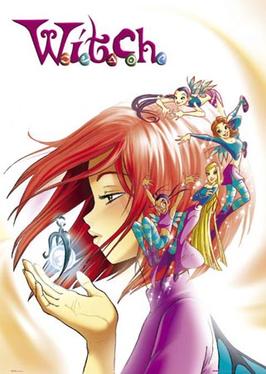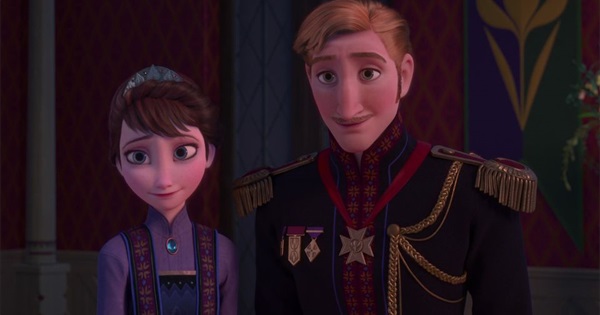I think more the second one..Would you consider her someone who somewhat escaped the entertainment industry matrix, or someone desperate to maintain connection to it?
Disney Exposed
- Thread starter sugarprincessxox
- Start date
Dreamymoon
Established
- Joined
- Mar 12, 2022
- Messages
- 158
redqueen
Superstar
- Joined
- May 15, 2017
- Messages
- 6,423
new show coming out is right disgusting

 whatsondisneyplus.com
whatsondisneyplus.com

New German Disney+ Original Series “Pauline” Announced
Disney has announced a new German original series for Disney+ called
 whatsondisneyplus.com
whatsondisneyplus.com
yes, you're right, the plot is really Disney, she have a one night stand with the devil and become pregnant, wownew show coming out is right disgusting

New German Disney+ Original Series “Pauline” Announced
Disney has announced a new German original series for Disney+ calledwhatsondisneyplus.com
redqueen
Superstar
- Joined
- May 15, 2017
- Messages
- 6,423
reminded me of the divito show that came out earlieryes, you're right, the plot is really Disney, she have a one night stand with the devil and become pregnant, wow
this is the story of the mom/natas relationship
Didn't know that showreminded me of the divito show that came out earlier
this is the story of the mom/natas relationship
redqueen
Superstar
- Joined
- May 15, 2017
- Messages
- 6,423
shows called little nomedDidn't know that show
spelling certain words backwards and wrong for some to
Hopefully take some power/energy away from the evils feeding
off them
Dreamymoon
Established
- Joined
- Mar 12, 2022
- Messages
- 158
Monsters Inc is another Disney movie which I think personally, is evil.
It is basically about monsters who enter into children’s rooms Through their bedroom doors. Once they enter, they have to extract screams by terrifying them which charges Up a battery which is used to fuel the power of monstropolos. The monster Who extracts the most screams is ranked on a system.
The monsters believe children are toxic and can’t be touched.
I mean, seriously? I used to love this film but it’s truly wicked.
It is basically about monsters who enter into children’s rooms Through their bedroom doors. Once they enter, they have to extract screams by terrifying them which charges Up a battery which is used to fuel the power of monstropolos. The monster Who extracts the most screams is ranked on a system.
The monsters believe children are toxic and can’t be touched.
I mean, seriously? I used to love this film but it’s truly wicked.
moodychick
Established
- Joined
- Mar 26, 2022
- Messages
- 379
She was always a brat. There was a rumor she's a bible-thumper. She used Christianity as a facade for her image. There's another crazy rumor about she and the producer of Suite Life had something going on. Plot twist: the producer was female! It's no wonder she got her own show Jessie.another Disney star that became problematic :
Sorry but what means Bible thumper?She was always a brat. There was a rumor she's a bible-thumper. She used Christianity as a facade for her image. There's another crazy rumor about she and the producer of Suite Life had something going on. Plot twist: the producer was female! It's no wonder she got her own show Jessie.
moodychick
Established
- Joined
- Mar 26, 2022
- Messages
- 379
It means someone who is obsess with the Bible and tries to persuade people to read it.Sorry but what means Bible thumper?
OK thanksIt means someone who is obsess with the Bible and tries to persuade people to read it.
moodychick
Established
- Joined
- Mar 26, 2022
- Messages
- 379
The film contains the one eye symbol. It's on the logo.Monsters Inc is another Disney movie which I think personally, is evil.
It is basically about monsters who enter into children’s rooms Through their bedroom doors. Once they enter, they have to extract screams by terrifying them which charges Up a battery which is used to fuel the power of monstropolos. The monster Who extracts the most screams is ranked on a system.
The monsters believe children are toxic and can’t be touched.
I mean, seriously? I used to love this film but it’s truly wicked.
Dreamymoon
Established
- Joined
- Mar 12, 2022
- Messages
- 158
W.I.T.C.H. Is owned by Disney. It’s a comic series I used to be crazy about. I had posters on my wall and owned books. They made it into a tv show too. They republished the books a few years and are for sale again and are for hire in thr library


it’s basically about 5 teenage girls who form the initials of the word witch (will, Irma, Taranee, Cornelia and Hay-Lin. They aren’t witches. They each have element powers (energy, water, fire, earth and air). They are the new five guardians to protect Kandrakar.
They transform via Will’s purple amulet (shown top picture). They gain wings but only Haylin can fly. They also “develop” so become sexier with thinner bodies and gain a bigger bust Compared to their every day forms.

I remember the first comic having nudity which I won’t post here.

 en.wikipedia.org
.
en.wikipedia.org
.


it’s basically about 5 teenage girls who form the initials of the word witch (will, Irma, Taranee, Cornelia and Hay-Lin. They aren’t witches. They each have element powers (energy, water, fire, earth and air). They are the new five guardians to protect Kandrakar.
They transform via Will’s purple amulet (shown top picture). They gain wings but only Haylin can fly. They also “develop” so become sexier with thinner bodies and gain a bigger bust Compared to their every day forms.

I remember the first comic having nudity which I won’t post here.

W.I.T.C.H. - Wikipedia
 en.wikipedia.org
en.wikipedia.org
ToxicFemininitySucks
Star
- Joined
- Jun 26, 2022
- Messages
- 2,264
Long read, but an excellent breakdown of the programming in the little mermaid. How disney took a morality tale about self sacrifice and turned it into feminist witchcraft propaganda. Not to mention spread the idea that "happiness", as defined by movies or other fictional tales, is the only thing that matters.

 rwilson.substack.com
rwilson.substack.com

De-Programming Feminism: Feminist Propaganda in Disney Films Part 1, “The Little Mermaid”
The last four generations of Americans have been swimming in a sea of feminist propaganda our whole lives.
Now contrast the original story with the Disney version we all know. In the Disney version, Ariel is a little girl with big dreams. She has a stern patriarchal father who wants to keep her under lock and key for the sake of tradition, societal expectation, and safety. Yes, she falls in love with Prince Eric, but her main motivation for wanting to live on land are her dreams of independence and liberation from her father’s rules. She is a privileged princess who has everything, but only wants the one thing she can’t have- life on land as a human. When she expresses this to her father, he ruins her secret trove of human treasures and forbids her to return to the surface, knowing that it would likely spell her demise. Everyone knows the song “Part of Your World” where Ariel sings:
Betcha on land, they understand
Bet they don’t reprimand their daughters
Bright young women, sick of swimmin’
Ready to stand and ready to know what the people know
Give ‘em my questions and get some answers
What’s a fire, and why does it- what’s the word- burn?
When's it my turn?
This song was an anthem for rebellion against the patriarchy. In fact, that is the central theme of the Disney version of the story. Ariel disobeys her father, uses witchcraft to do exactly what her father warned her not to, and ends up getting herself kidnapped by the sea witch. Her father, King Triton, then has to intervene and save her by allowing himself to be captured in her place. Because of this, the whole sea kingdom ends up under the dominion of the evil sea witch, spelling certain doom for the merfolk. Eric risks his own life to kill the sea witch and frees King Triton. The king then (absurdly) apologizes for trying to stand in the way of his sixteen-year-old daughter’s foolish dreams. He forgives her disobedience and recklessness which almost got the whole kingdom annihilated. Ariel gets everything she wants, and the message sent to young girls everywhere is that your dad is a big meanie head who just doesn’t want you to be independent and have fun. All the men in your life must sacrifice their very lives and even all of society if that’s what will make their little princess happy. Also, there is no negative consequence for being disobedient, lying, deceiving others, or practicing witchcraft as long as it makes you happy. The “happiness” of young beautiful women is all that really matters. The men will rescue you from all the trouble YOU are responsible for causing because that’s all they’re good for. The End.
In contrast to the original Danish folk story, we see that the Disney version is devoid of any moral teaching whatsoever. The original story teaches that the most moral path possible, the one that leads to eternal salvation, is self-sacrifice for the love of others. It teaches young women that a life of service to those they love and to humankind is what saves them. The original Little Mermaid was willing to sacrifice her own life and even her chance at a soul to prevent harm to the man she loved, even if he married someone else. There was nothing in it for her whatsoever. Her motivation couldn’t be purer, and this is what saved her in the end, even though she did not receive temporal reward in this life. This is in line with Christian morality, which is probably why Disney, run by Jeffrey Katzenberg at the time, completely inverted it. The meaning and moral of the story was turned into the polar opposite of the original.
Dreamymoon
Established
- Joined
- Mar 12, 2022
- Messages
- 158
Disney movies apart from being occult have had lots of tragic themes in them. But then again it seems many kids movies do. Last Unicorn for example and the Land Before Time, An American Tail… Watership Down, Brave Little Toaster , Care Bears.. probably more.Does anyone else suspect trauma programming behind so many Disney stories having the parents die?
Also did anyone have nightmares growing up after watching Disney movies?
Disney Movies Featuring Dead Parents
Disney sure loves orphans and killing off parents, huh? These are all the movies the House of Mouse has made where at least one of thewww.listchallenges.com
I would have dreams almost every night of inanimate objects coming to life and trying to kill me and I realised movies like Toy Story and even Sesame street (Which had the walking bed) planted ideas in my subconscious.
Last edited:

